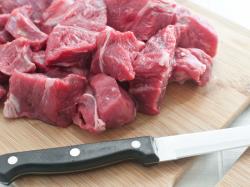Rabobank Beef Quarterly Q2 2018: Production Continuing To Grow, But Supply Pressure Starting To Mount
May 24, 2018 | 2 min to read

The global beef complex is looking strong. Production is up, consumption is up, and prices are favourable. But is this there more to this than meets the eye? RaboResearch’s latest Beef Quarterly report examines the outlook for the global beef sector.
Global beef production and consumption continues to grow, but is this just the tip of the iceberg? And does the unknown that lies beneath have the potential to cause major disruption? “Pressures are building in some of the world’s major beef markets,” says Angus Gidley-Baird, Senior Analyst – Animal Protein. “US weather conditions, low domestic export prices in Brazil, and changes to live cattle and carabeef trading in Asia have the potential to change the course of the global market.”
Global highlights
US-China trade war
On 23 March, President Trump announced his intention to impose tariffs amounting to USD 60bn on imports from China. In turn, China initially retaliated with a list of 128 US products, soon followed by a further list of 106 items that would be subject to a 25% tariff. Included on this list was beef. But beef trade between the two countries is limited – and realistically, the imposition of a 25% tariff is only expected to have minimal impact on the US beef industry… and even less on broader global beef trade.
Australian live sheep trade
On 8 April, Australian television broadcast footage showing distressed, unwell, and dead sheep on board a vessel sailing from Australia to the Middle East. The footage has raised concerns about animal welfare conditions on ships, along with standards and policing around these. At the time of writing, a government-initiated review has just been released, which includes recommendations to decrease stocking densities, as well as measures to reduce heat stress and increase monitoring and reporting.
US production remains strong
The revised forecast of 5% production growth in 2018 still holds true, with the early-placed cattle on feed now starting to be turned off. Escalating feed costs will impact the cost of gain and will limit the carcase weight increases. Ongoing dry conditions also threaten increased beef cow slaughter numbers, which are currently tracking 10% higher for the year-to-date (mid-April), compared to 2017.
Click here to download the report
Source: Rabobank
